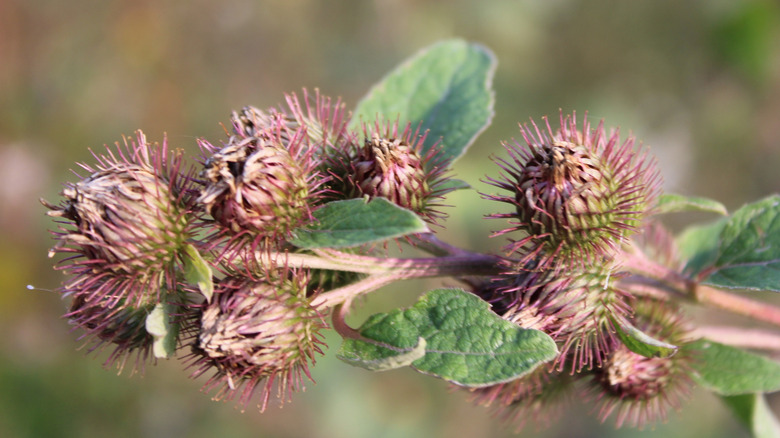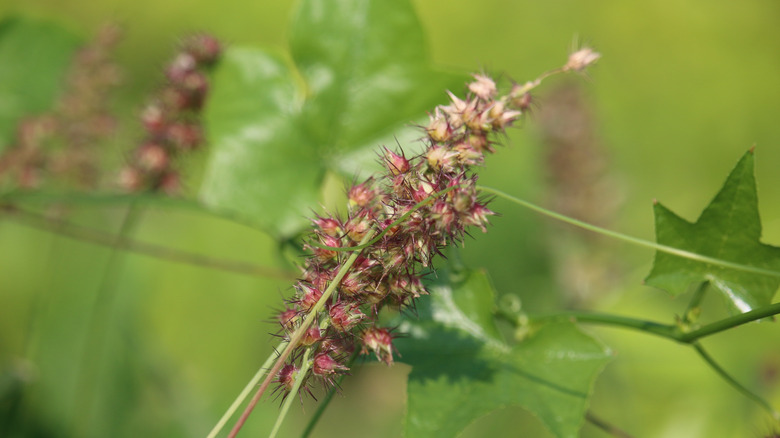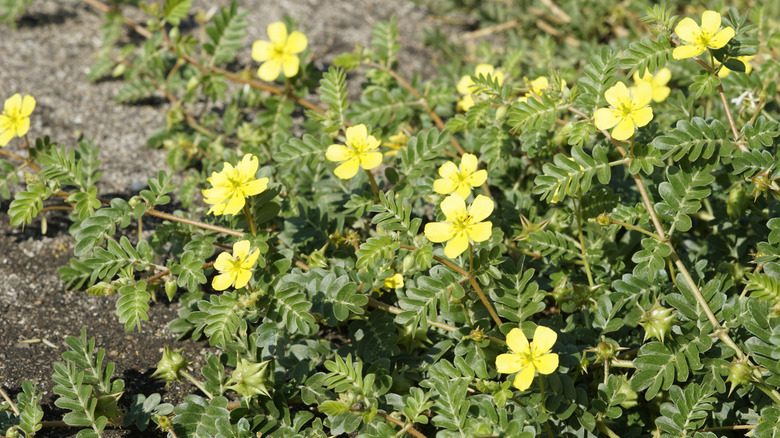How To Identify And Treat Sticker Weeds In The Fall
Patience is important when battling weeds. Different species of these pesky plants can grow in almost any season. Once you eliminate one type of weed, it may feel like another type almost immediately grows in its place. One of the most obnoxious types of weeds is what many people refer to as sticker weeds. There are a few different versions of these plants, but they are infamously known for the prickly seeds that stick to your pants and shoes or become embedded in your dog's fur. Step on one of them with bare feet and you'll feel it immediately.
Some of the most common names for these types of plants are field burweed or bindi weed (Soliva sessilis), sandbur (Cenchrus longispinus), and goathead (Tribulus terrestris). Such weeds can be problematic in the fall because their germination and growth match up with the time when other plants or your lawn grasses go dormant. Because of this timing, they don't quite rank among the most important weeds to pull in late summer and early fall, but you can have success treating them with pre-emergence herbicides in mid-fall.
If you've noticed stickers and burrs on your clothing and pets during the warmer months, it's time to treat these weeds before the next growing season. Learn how to identify the weeds that produce the painful stickers and how you can get rid of them for good.
How to identify the weeds that create stickers and burs
To identify burweed (also known as spurweed), look for a weed that has branches spreading freely along the ground with leaves that are two to three times as long as they are wide. Leaves range from ½ to 1 ½ inches in length. These are bright green, narrowly divided, and sparsely hairy. The spine-tipped burs form in the leaf axils, which are the areas where the leaf connects to the stem.
Sandburs, also known as burgrass or hedgehog grass, are easily identifiable once the prickly seed heads form. The burrs form in clusters at the tips of the upright grass-like leaves, usually consisting of between 10 and 30 burrs. The clusters measure 1 to 3 inches in length. The plant can resemble other kinds of tall grass until the burrs form.
Goathead weeds, also known as puncturevine, spread aggressively across the ground from a single taproot. They can form quite a dense groundcover. The stems have oval leaves that are paired on opposite sides, similar to a fern. The plant produces bright yellow flowers in late summer, each of which has five petals. The flower nodes eventually grow burrs that break apart to reveal the spiny seed capsules. These are sharp enough to puncture bicycle tires, so you want to eliminate this weed before your pets or kids step on it.
Best way to eliminate pesky sticker weeds in the fall
Fall is the best time to control and prevent winter burweed from growing. By treating the burweed plants in autumn with a pre-emergent herbicide, you'll prevent them from growing back the following year. In warmer climates, treating the burweed over the winter with a post-emergent herbicide also works well, because the weed plants are small and weaker. If you wait to treat these until March, April, or May, it's often too late because the stickers will have already formed and will stay in the soil.
To get rid of pesky sandburs in your lawn, you should use a combination of pre-emergent and post-emergent herbicides. However, you should start by applying a pre-emergent herbicide in the early fall. Because sandbur tends to grow in the lawn, always select a herbicide that's safe to use with your grass. You might have to perform the treatment for at least two years before you can completely eliminate the sandburs.
Taking manual steps to eliminate goathead in the fall successfully controls this sticker weed. For areas that have cold weather in fall and winter, the first freeze will kill any goathead weeds. You should then manually gather all the vines, thorns, and roots of the plant. Dispose of them safely in your trash or by burning them. Before freezing temperatures arrive in the fall, you can use a shovel to clip the taproot just under the ground and dispose of the plant. If the goathead plant has flowered by autumn, it's too late to treat it with a herbicide. By this time, the spiky seed has already developed and will remain in the soil until spring arrives again, when it will sprout.


